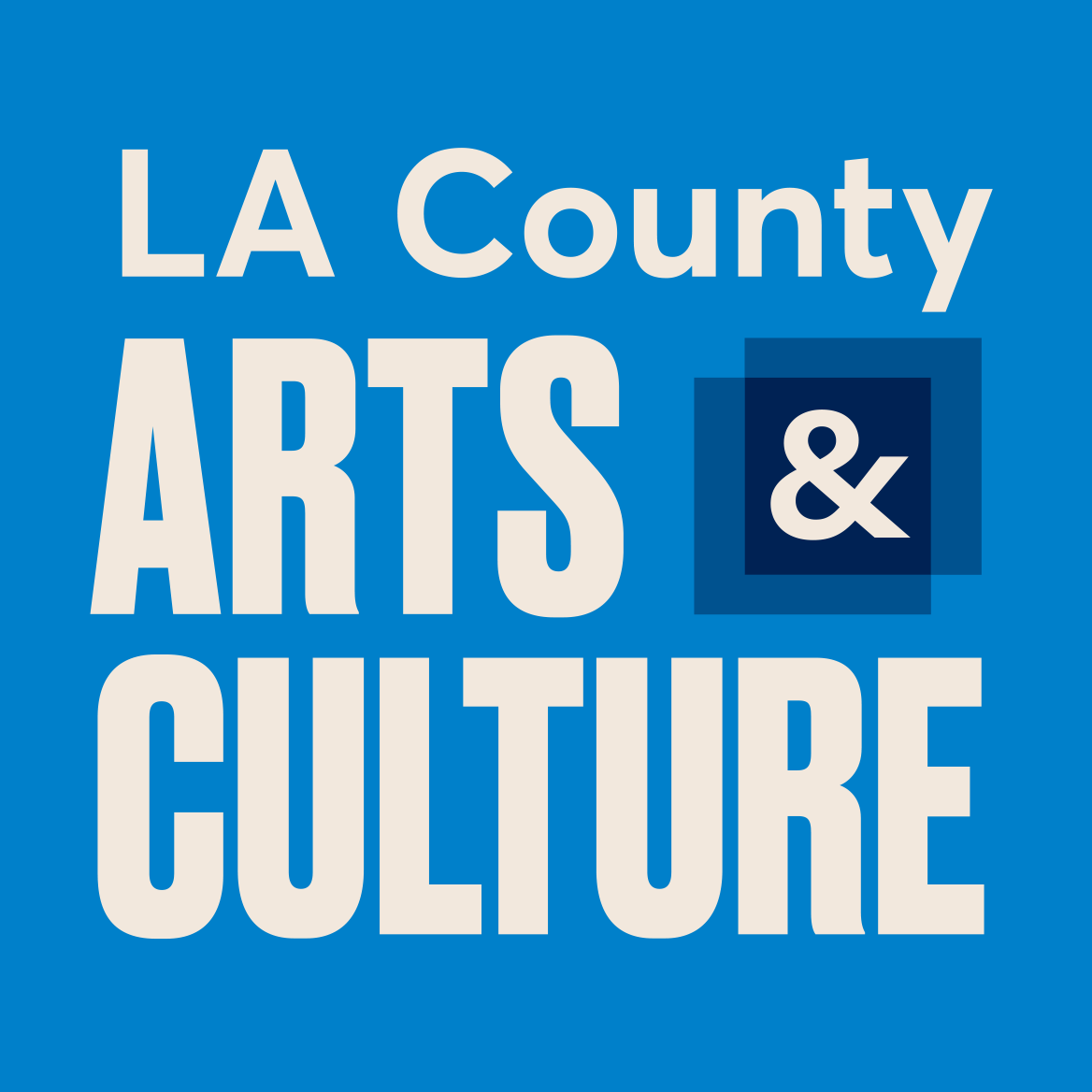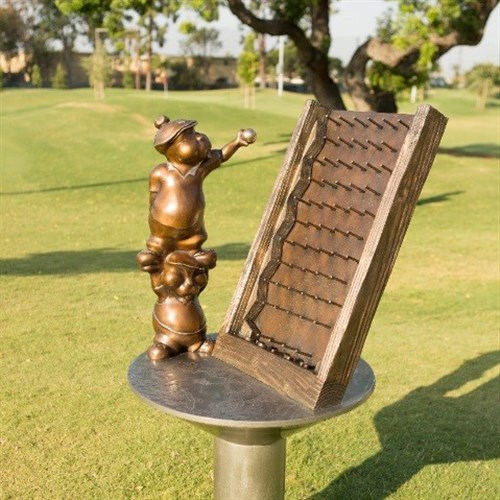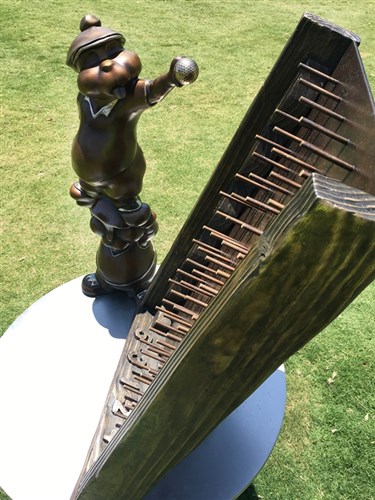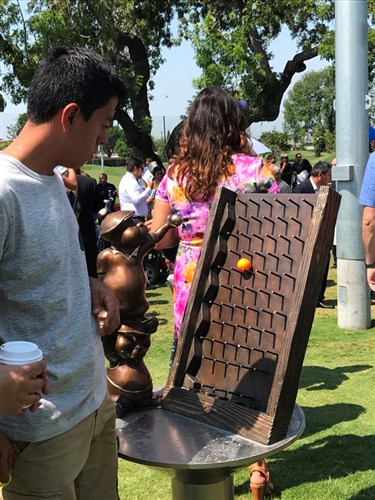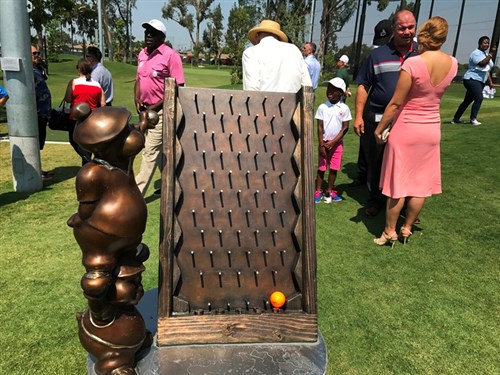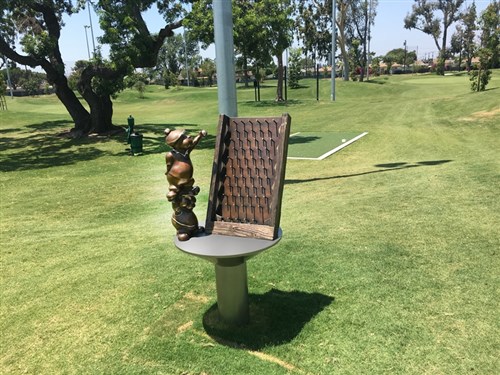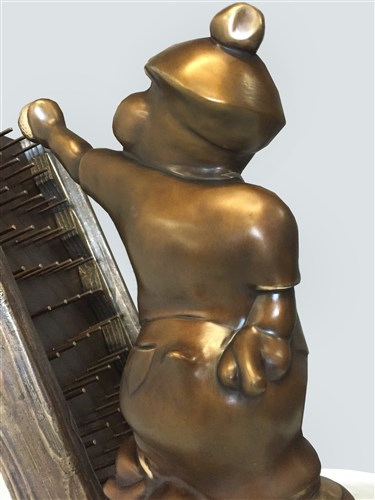Artwork Detail
Bogey & Scratch
Artist: Hacer, Gerardo
Date: 2017
Medium: Bronze and stainless steel
Artwork Dimensions: 54 x 24 x 24 in.
County Department: Parks and Recreation
Artwork Site: Don Knabe Golf Center and Junior Academy
Supervisorial District: 4
Current Status: On view
About the Artwork: Gerardo Hacer designed a sculpture featuring mascots for Norwalk Golf Center—two gophers named Bogie and Scratch—prompting golfers to consider the relationship between luck and skill in competitive sports. Placed near the tee off area for the first hole, the sculpture features Bogie and Scratch perched on top of an oversized polished stainless steel golf tee holding up a plinko board. Bogie and Scratch invite golfers to drop their golf ball down the plinko board to help them decide the order which golfers will tee off before they start golf game. Bogie, named after the golf term meaning one shot more than par, represents the inexperienced golfer. Scratch’s name is derived from the term scratch golfer—someone who golfs at or better than par. Bogie and Scratch are meant to embody the idea that practice is the difference between a seemingly lucky and unlucky golfer. Arist Biography Renown for his bold, origami-inspired, metal sculptures that explore psychologically complex themes; Gerardo Hacer’s introduction to the nostalgic art form began at age seven when a volunteer in one of his foster homes read, Sadako And The Thousand Paper Cranes by Eleanor Coerr. His reductive reinvention of the aesthetic evolved technically over decades along with its conceptual counterpart. The resulting work is an amalgamation of innocent childhood play, indirect exposure [in adulthood] to Alexander Calder’s fluid experimentation with form and [after recruitment by renown art fabricator, Peter Carlson] first hand working knowledge of Jeff Koons novel approach to materials, John McCracken’s exhaustive attention to detail and Ellsworth Kelly’s steadfast commitment to minimalism. The perfection of his technique in combination with monumental vision have manifested museum and national art fair exhibitions and realized massive, permanent sculptural installations that include Wynn Macau Luxury Resort, The Los Angeles Pacific design Center, University Hospitals Case Medical Center in Cleveland, OH; Los Angeles Trade Technical College and Autry National Center Southwest Museum.
About the Artist: Renowned for his bold, origami-inspired, metal sculptures that explore psychologically complex themes; Gerardo Hacer’s introduction to the nostalgic art form began at age seven when a volunteer in one of his foster homes read, Sadako and the Thousand Paper Cranes by Eleanor Coerr. His reductive reinvention of the aesthetic evolved technically over decades along with its conceptual counterpart. The resulting work is an amalgamation of innocent childhood play, indirect exposure [in adulthood] to Alexander Calder’s fluid experimentation with form and [after recruitment by renown art fabricator, Peter Carlson] firsthand working knowledge of Jeff Koons novel approach to materials, John McCracken’s exhaustive attention to detail and Ellsworth Kelly’s steadfast commitment to minimalism. The perfection of his technique in combination with monumental vision have manifested museum and national art fair exhibitions and realized massive, permanent sculptural installations: Wynn Macau Luxury Resort, The Los Angeles Pacific design Center, University Hospitals Case Medical Center in Cleveland, OH; Los Angeles Trade Technical College and Autry National Center Southwest Museum.
E-News Sign Up
Sign up below for the latest news and updates!
